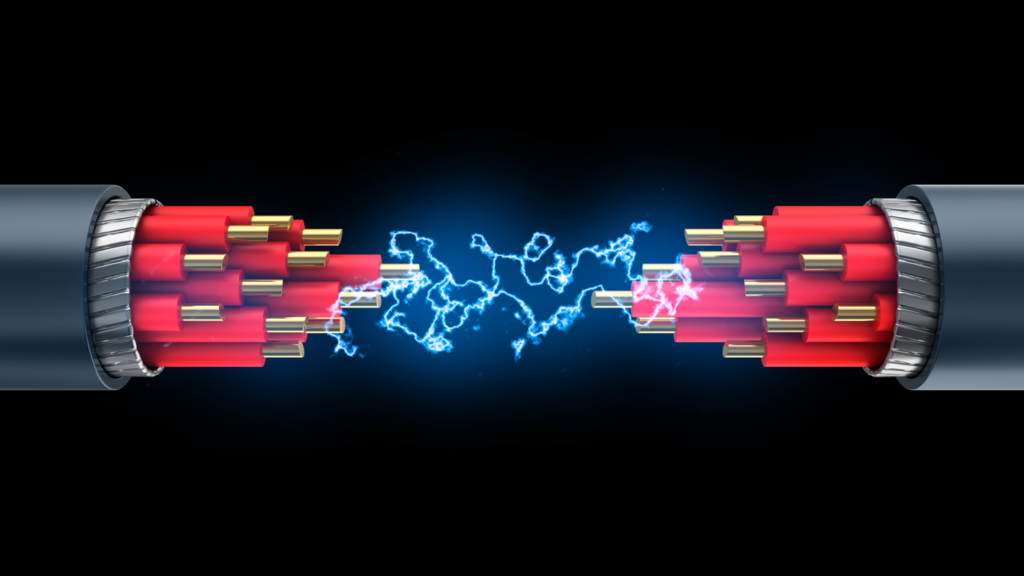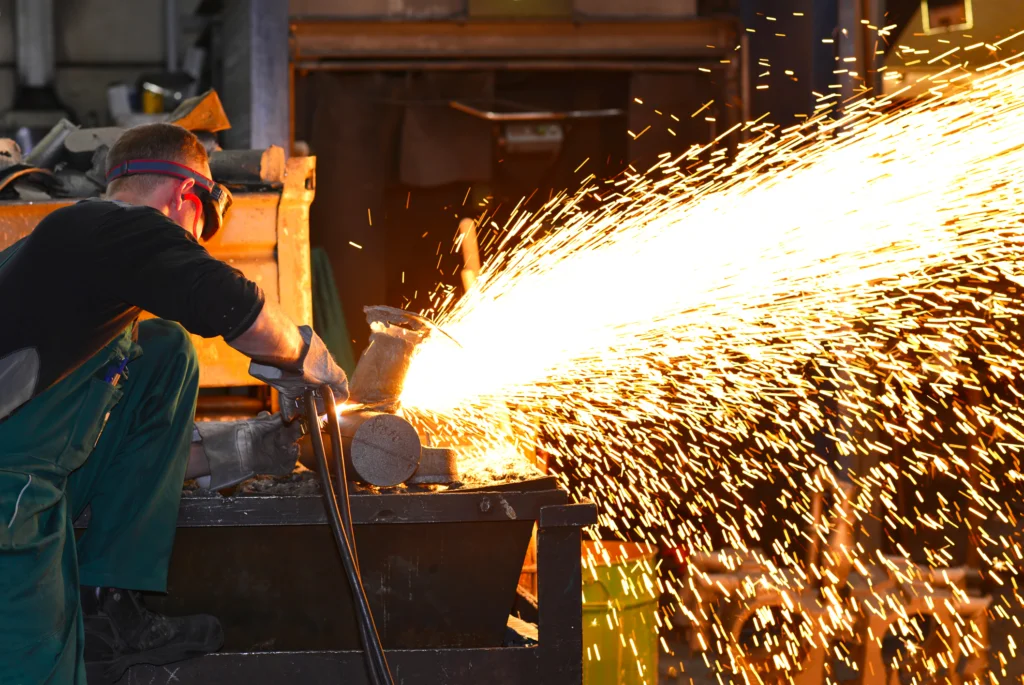Arc Flash: How to Protect against Them
What is the definition of an Arc Flash?
An arc flash is a light and heat produced from an electric arc. When supplied with sufficient electrical energy, it can result in an arc blast, which causes considerable damage, harm, fire, or injury.
Electrical arcs experience negative incremental resistance. An arc flash causes the electrical resistance to decrease as the arc temperature increases. Therefore, as the arc develops and gets warmer, the resistance drops. This draws more and more current until some part of the system melts, trips, or evaporates, providing enough distance to break the circuit and extinguish the arc.

If well-controlled and fed by limited energy, electrical arcs produce very bright light. Arc lamps use electrical arcs for welding, plasma cutting, and other industrial applications. Welding arcs can quickly turn steel into a liquid with as little as 24 volts of Direct Current (DC). When an uncontrolled arc forms at high voltages, an arc flash can produce deafening noises and superheated shrapnel. This can generate more heat than at the Sun’s surface. So, such an arc blast produces intense, high-energy radiation capable of vaporizing nearby materials. The use of large supply wires or high-current conductors amplifies this problem.
The arc terminals can reach 35,000°F (19,400°C) during an arc flash. A fault releases large amounts of energy, causing molten metal and plasma to explode outward. A typical arc flash can be insignificant but could cause a more severe arc blast. The violent event can destroy equipment, fire, and injury to electrical workers and bystanders. With explosive force, the metal vaporizes during an arc flash. For example, when copper vaporizes, it expands by 67,000 times in volume.

Arc Flash Examples
An arc flash commonly occurs when an incandescent light bulb burns out. When the filament breaks, a bright blue arc envelops it in plasma. Most household light bulbs have a built-in fuse. This prevents a sustained arc flash from forming and blowing fuses in the circuit panel. Most 400 V and higher electrical services can cause an arc blast. Medium-voltage equipment (above 600 V) has a higher potential for an arc blast. Higher voltages can cause a spark to jump. This can initiate an arc flash without physical contact and sustain an arc across long gaps. Most power lines use voltages exceeding 1000 volts. They can be hazardous to birds, squirrels, people, or equipment such as vehicles or ladders. People can witness them from lines or transformers just before a power outage. They create bright flashes like lightning that can be seen for long distances.
High-tension power lines often operate in the range of tens to hundreds of kilovolts. Power companies must insulate the lines with a proper “flashover rating.” They should also sufficiently space them from each other to prevent an arc flash from spontaneously developing. If the high-tension lines become too close to each other or to the ground, a corona discharge may form between the conductors. This is typically a blue or reddish light caused by ionization of the air, accompanied by a hissing or frying sound. The corona discharge can easily lead to an arc flash by creating a conductive pathway between the lines. Electrical storms can enhance this ionization, causing spontaneous arc flashes and power outages.
Required Precautions against an Arc Blast
Electrical circuits, especially tripped circuit breakers, commonly cause arc blast injuries. A tripped circuit breaker usually indicates a fault downstream from the panel. It occurs if the defect is not isolated before powering up. Switches form small arcs when the contacts first touch, which can lead to an arc flash. An arc flash can form at high enough voltages when the breaker is turned on. Generally, an electric motor with shorted windings or a shorted power transformer is to blame for an arc flash. Motors over two horsepower usually have magnetic starters to isolate the operator from the high-energy contacts and allow the contactor disengagement if the breaker trips.
Circuit breakers are the primary defense against current runaways. So, if an arc flash develops in a breaker, it can easily cause an arc blast. Once an arc flash begins in a breaker, it can quickly migrate from a single circuit to the busbars of the panel itself. Precautions must be used when switching circuit breakers, such as standing to the side while switching, wearing protective clothing, or turning off equipment, circuits, and panels downline before switching.
An arc flash produces a cloud of plasma and ionized particles in addition to heat, light, and concussion. This ionized gas can cause severe burns to the lungs. Metallic objects such as jewelry or eyeglasses attract charged plasma, causing severe localized burns. When switching circuits, a technician should remove any metals from their body. An arc flash is more likely to form in a switch that is closed slowly. So, it is usually more desirable to “throw” switches with a fast motion. High-current switches often have a system of springs and levers to assist with this.

Protecting Personnel from an Arc Flash
There are many methods of protecting personnel from arc flash injuries. This can include personnel wearing personal protective equipment (PPE) or modifying the design and configuration of electrical equipment. The best way to remove the hazards of an arc blast is to de-energize electrical equipment when interacting with it.
However, de-energizing electrical equipment is in and of itself an arc flash hazard. In this case, one of the newest solutions is to allow the operator to stand far back from the electrical equipment by operating equipment remotely. This is called remote racking. To learn in detail about site safety hazards pertinent to your job operations in the Construction Industry, get yourself enrolled in OSHA 30 Construction to comply with significant Standards regulated by the Federal OSHA.
Arc Flash PPE
Many workplaces offer arc flash personal protective equipment (PPE) such as arc flash suits, overalls, helmets, boots, and gloves. The arc rating of protective gear determines its effectiveness. The arc rating is the maximum incident energy resistance demonstrated by a material before breaking (a hole in the material) or necessary to pass through and cause a 50% probability of second-degree burns. Manufacturers usually express arc rating in cal/cm2 (or small calories of heat energy per square centimeter).
PPE provides protection only after an arc flash incident has occurred. Workplaces should view it as the last line of protection. Companies should prioritize reducing the frequency and severity of incidents. A complete arc flash hazard assessment and the application of technology such as high-resistance grounding can help achieve this. This has proved to reduce the frequency and severity of incidents.
Reducing Arc Blast Hazard by Design
The intensity of arc blast depends on three factors. These factors are the quantity of fault current available in a system, the time until an arc flash fault is cleared, and the distance an individual is from a fault arc. Manufacturers can make various design and equipment configuration choices to influence these factors and in turn, reduce the arc flash hazard.
Upon receiving your OSHA 30 certification from an OSHA-approved source, you will be able to acknowledge the following:
Fault Current
Current limiting breakers, grounding resistors, or fuses can limit fault current. For 5 amperes or less, many ground faults self-extinguish and never become phase-to-phase faults.
Arcing Time
Using Zone-selective Interlocking Protection (ZSIP) or temporarily lowering upstream protective device setpoints during maintenance can reduce arcing time. By communicating with an upstream breaker, a downstream breaker that detects a fault can delay its immediate tripping. Faults in the circuit are cleared by the breaker closest to the fault, minimizing system impact. All breakers upstream of a fault (closer to the source of power) on a branch circuit will detect it. Upstream breakers will not trip until the downstream fault gets resolved. This allows an upstream circuit breaker to interrupt the fault if necessary after the preset time has passed. Quicker instantaneous trip settings are possible with ZSIP. Faster trip times reduce arc fault energy.
Protection based on arc-flash detection can significantly reduce arcing time. Companies often combine this with optical detection. Light and current-based protection can be set up with dedicated arc-flash protective relays, or by using normal protective relays equipped with an add-on arc-flash option.
Distance
The radiant energy released by an electric arc can permanently injure or kill a human at distances of up to 20 feet (6.1 m). “Flash protection boundary” is the distance from an arc flash source within which an unprotected person has a 50% chance of receiving a second-degree burn. Those conducting flash hazard analysis must consider this boundary and determine what PPE should be worn within the flash protection boundary. Companies can also use remote operators or robots to perform activities that have a high risk for arc flash injuries, such as inserting draw-out circuit breakers on a live electrical bus. Remote racking systems are available, which keep the operator outside the arc flash hazard zone.







